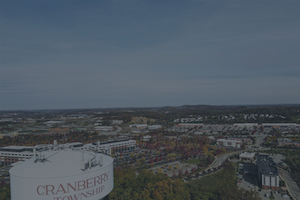Cranberry Township kick-starts greenways project
A plan to further connect Cranberry Township community members through greenway corridors is starting to take shape.
The township said recently staff was authorized to begin implementing recommended actions from a greenways study that proposes expanding parks, recreation and transportation connections across the community.
The study was conducted by the township’s planning and development services in consultation with engineering firm Herbert, Rowland & Grubic. It was intended to begin developing a long-term vision for linking nearly 3,000 acres through a connected network of trails, parks and natural corridors.
“It’s hugely important. Green spaces and trails, greenways and open spaces, they’re an important component of enhancing the quality of life for residents in Cranberry Township,” township manager Dan Santoro said. “Promoting health and activities, getting outside and also connecting in different places. Those green spaces are part of building quality of life in a community.”
The township’s greenways plan was introduced during a May supervisors’ meeting, and the board adopted the plan Thursday, June 26. The approved resolution authorizes staff to begin implementing recommended actions.
Lori Morgan, a senior planner with the engineering firm, previously defined “greenways” as undeveloped corridors near urban and suburban developments that are designated for both public recreation and ecological preservation. She said, at a June 6 board meeting, there are significant economic benefits to finding and evaluating what is possible for those open spaces and how to further connect communities.
“You’re connecting economic opportunities and bringing people to new areas by creating physical connections,” Morgan said June 6.
The long-term vision for the township is to link around 3,000 acres of existing green spaces and preserved land through trails, parks and natural corridors. It could take 10 to 15 years.
Santoro said the first step is setting up an organizational structure for leading the project — something he envisions taking the next 12 months.
“I think some of the early implementation steps are in the immediate time frame, like the organizational structure,” Santoro said. “The report said one of the primary recommendations is to look for nonprofit organizations or groups that could assist in advancing initiatives related to how to connect these open spaces.”
Once organization is in place, Santoro said, the township can talk about going after grants to assist in funding. From there, the focus will probably be on identifying high priority connections and how to go about securing a buy in from community.
“Something as big as this will take time,” Santoro said.
He hopes to start the first major connection project at some point in the next three to five years.
When the study was presented to the board, data collection and spatial analysis was used to highlight three potential future corridor areas: Bush Creek, Coal Run and North Boundary. The Bush Creek greenway would use existing, open land near the creek running through the township. Coal Run cuts through more commercial areas and major roads like Routes 19 and 228. The North Boundary greenway would be situated near an existing Penn Power easement.
“With continued, steady growth, we have increased demand for recreational spaces, bike access, we have public park spaces,” Santoro said. “I’d call this ‘passive space,’ going for a walk on a trail, to a school, to another park, to someone else’s house, these things lead to good quality of life in community.”










